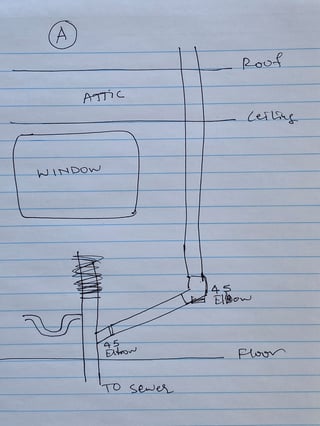The kitchen sink is directly below a window, so the vent has to go around it.
This is how it is currently routed:
Because I am installing an undermount sink, I need to lower the p-trap. I am also replacing the galvanized pipe with CPVC of the same size (2").
Which of the following two vent pipe routes are more appropriate? Note that I can't move or reroute where the drain enters the floor. It's already in a very tight space.
- [Route A - vent arises below p-trap]:
- [Route B - vent arises above p-trap]:
Route A is preferable because that gives me more clearance to run 45 degree pipe. I may or may not have sufficient clearance to run Route B.



